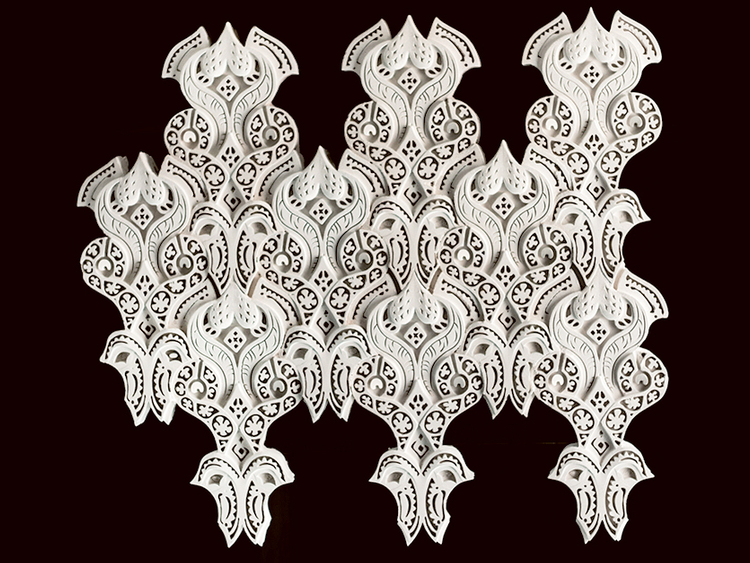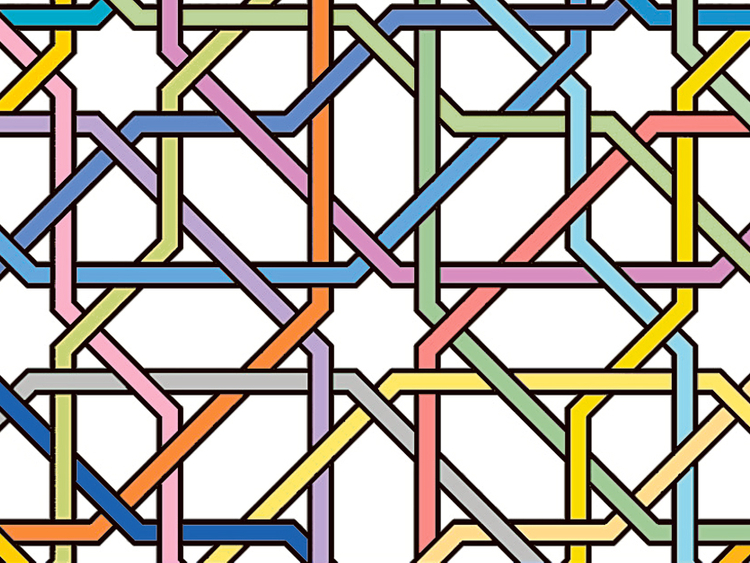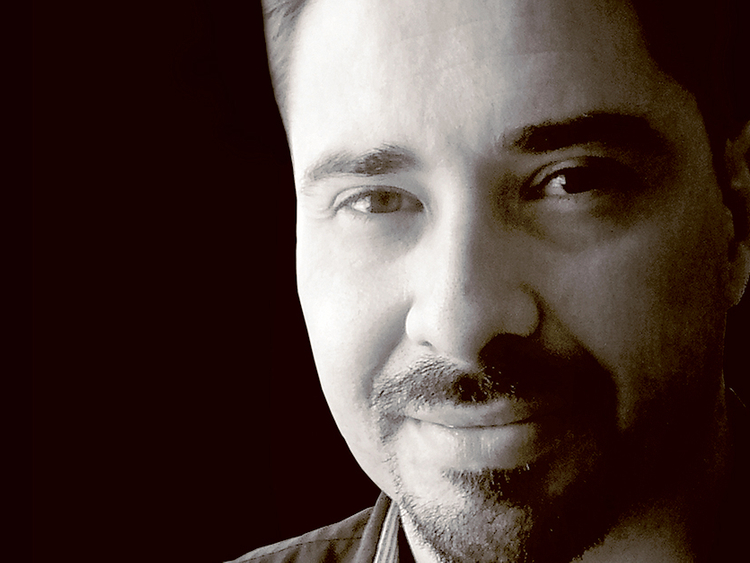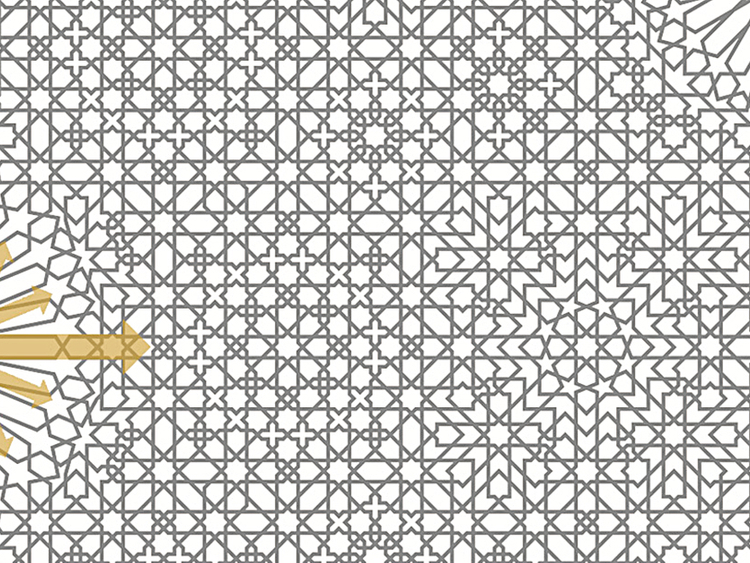Luis Fernando Molina and Julian Eduardo Molina are Information Technology experts from Argentina. After discovering the beauty of Islamic art and architecture during their travels, the brothers became so fascinated with Islamic geometric and arabesque patterns that they have done extensive research on this art form and developed programmes to create a new generation of patterns, as well as the technology to fabricate and execute these patterns in various products.
They have now moved to the UAE and established a company, Nomad Inception, that uses computational design techniques to produce architectural products inspired by Islamic art. Working together with a team of international designers, artists, scientists and technologists who share their passion for Islamic art, the Molina brothers have launched several products featuring traditional and new designs, including the largest non-periodic geometric compositions ever created, while respecting every rule of this ancient art form.
We spoke to Julian Molina about their passion for Islamic art and their plans to use technology to take it further. Excerpts:
How did you get interested in traditional Islamic art and architecture?
I became fascinated with it after visiting Spain and Morocco. My brother was similarly impressed by the work of Andalusian craftsmen at a palace in Cuba. I was then in the Caribbean running a company that did post-production graphics and animation for television and films, and my brother was running a company that provided IT solutions for the finance industry. But we decided to learn more about Islamic art by reading books, meeting academicians, visiting ancient souqs, palaces, mosques and madrasas, and interacting with artisans.
What was the idea behind developing this technology?
During our research we were amazed to learn that even today the craftsmen use traditional tools such as a pencil, compass, hammer and chisel to create these complex and intricate patterns. We also realised that the art of creating these patterns was mastered only by a few craftsmen and confined to few families where it is passed on from one generation to the next.
No one person knows all the secrets behind these patterns, because even the most accomplished artisans work with a limited catalogue of motifs from their region, which are stored only in their memory. Through technology we wanted to find a way for architects to implement elements of Islamic decorative art and architecture even in places where skilled artisans are not available.
How is your programme different from others?
When we began our research in 2010, we found that none of the existing programmes were completely accurate or took into account all the rules. Most of them could resolve just one specific family of patterns. Our computational design system can not only generate traditional patterns from different regions, periods and design styles, but we can also create original patterns, including the largest and most complex ever created, while following all the traditional rules.
It is akin to connecting the minds and souls of thousands of craftsmen across the globe. Our vision is to use computational design and modern fabrication technology to breathe new life into an artistic expression that has remained unchanged for centuries.
How can this technology be used?
We run a design consultancy that helps architects and interior designers incorporate Islamic geometric designs and floral arabesques in their projects. But since it is expensive to execute large complex designs for a single project, we have developed a production-oriented solution that allows us to create decorative pieces based on Islamic geometric and floral arabesques in a fraction of the time it would take to do by traditional means.
By combining technology and the skills of artisans we have created architectural products that people can buy even for small individual projects.
What products do you manufacture?
The first product we launched is luxury parquet floors in the finest precious hardwoods. Besides our own designs, we have invited renowned geometric artists, such as Jay Bonner and Eric Broug who have written books on the subject, and Jean-Marc Castera who is a well-known expert in Moroccan designs, to create designs for us.
Nomad Inception is the only company to have the technology necessary to produce large, complex geometric compositions without breaking the designs into horizontal and vertical lines that are not part of the pattern. We can do this because instead of the standard square or rectangular panels, we create parquet tiles with irregular shapes that respect the polygonal and other shapes contained in the pattern.
Our biggest breakthrough is that we can produce large non-repetitive patterns that keep growing outwards from the central rosette, such as our “Al Andalus” pattern, which is the most elaborate non-periodic pattern ever created.
Another unique feature is our ability to create interlace embellishments in all our designs. Interlaces are lines running along the sides of each shape of the motif, and since the rule is that each line must travel alternately above and below each line crossed, artisans are unable to do this in large, complex designs.
Our parquet panels are machine cut, but assembled by hand by craftsmen who handpick every piece to match the grains, colour quality and light reflecting properties of the wood. With these preassembled panels, our complex designs can be installed as quickly as any other hardwood flooring, at a cost comparable to that of other artistic parquet floorings.
We have recently introduced a decorative plaster collection featuring the finest carved decorative panels and ornamental architectural elements, such as cornices, corbels, ceiling panels and medallions, arches, columns, capitals and crowns, windows and door frames, and friezes.
We have a traditional collection featuring geometric and floral designs in Moroccan, Turkish, Indian, Persian and other styles, and a contemporary line, which includes gypsum walls that are a three-dimensional interpretation of geometric patterns.
We have partnered with Platre, a renowned French custom decorative plasters company, and our plasters can be custom-made in any colour and texture.
What are your plans for the future?
We will collaborate with new artists and add new products and patterns to our range. We will continue to work with interior and exterior designers to help them implement their ideas. We also plan to make design kits to help architects create their own patterns backed by the confidence that our company will be able to execute them. And we hope to take our UAE-based brand to markets across the world.
For more information, visit www.nomadinception.com.
Jyoti Kalsi is an arts enthusiast based in Dubai.

















